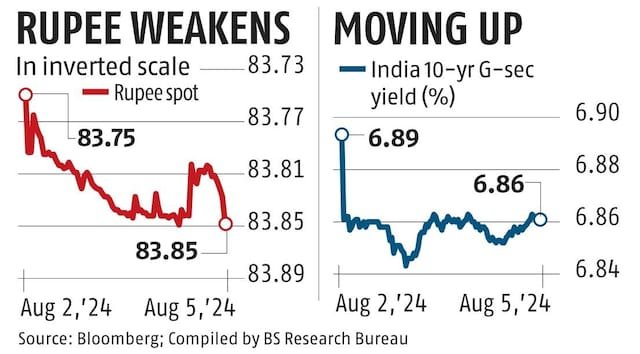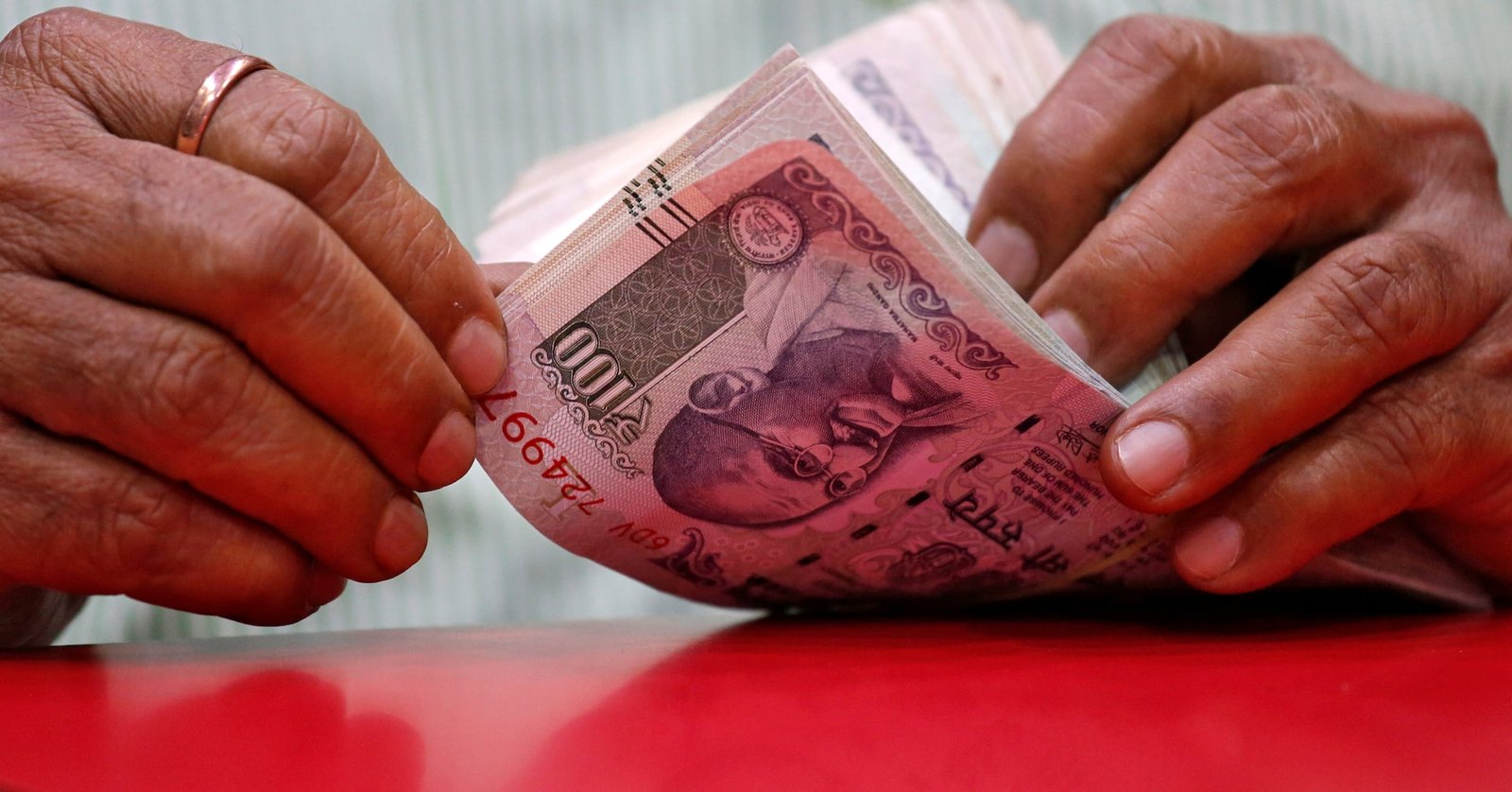Rupee closed at a new low of Rs 83.85 against the US dollar on Monday, weakening 0.11 per cent following a significant outflow due to sharp fall in domestic equities and growing concerns about a potential recession in the US. Government bonds, however, gained tracking the fall in US treasury yields, said market participants.
The 10-year government bond yield settled at 6.86 per cent, lowest since March 31, 2022, against 6.90 per cent on Friday. Rupee had settled at 83.75 per dollar on Friday.
“The bond market was looking at the US yields; recession fear seems to have flipped the market, and it has gone to the level where most market participants did not expect to reach so soon. There is discussion going on that there might be a surprise rate cut of 50 basis points (by US Fed),” said a treasury head at a private bank.
“Rupee slumped because of outflows as there is some amount of global uncertainty, and during trading hours, it was holding up to some level, but after that it went up to Rs 84.16 per dollar in the offshore market,” he added. The benchmark Sensex plunged 2222.5 points, or 2.74 per cent, on Monday due to recession fears.

“We see rupee touching Rs 84 a dollar as the Reserve Bank of India (RBI) might have to let go of the rupee and let it depreciate gradually when there are so many global factors,” said the private bank treasury head.
The Indian unit depreciated despite a fall in the dollar index. The dollar index, which measures the strength of the greenback against a basket of six currencies, fell to 102.53, lowest since January 10, against 103.21 on Friday.
The rupee has depreciated by 0.5 per cent in the current financial year, and 0.8 per cent in the current calendar year.
Crude oil prices tumbled to $75.25 per barrel due to mounting recession fears. The market reacted to falling demand from China and the US, compounded by a sharp drop in US labour data on Friday and the ongoing declines in manufacturing data.
Foreign exchange dealers are now looking at the developments in the Middle East for further cues.
On the other hand, bond market participants believe that rate cut expectations by the US rate-setting panel might be a positive cue for the domestic market as it gives certainty around interest rates.
Traders now eye the domestic monetary policy committee meeting outcome on August 8 for further cues.
“As of now, it is difficult to predict the movement of bond yields. RBI also has the opinion that there is going to be global headwinds on growth and commodity prices are going to remain soft. So, if the country is more on slightly comforting and dovish on inflation, then we might see benchmark yield moving towards 6.75 per cent. But if the inflation continues to spike, then chances are that we may see some retracement from this value level,” said Naveen Singh, vice-president of ICICI Securities’ primary dealership.
In the current financial year, benchmark yield has softened by 20 basis points, whereas in the current calendar year, it has softened by 31 basis points.
First Published: Aug 05 2024 | 8:49 PM IST







